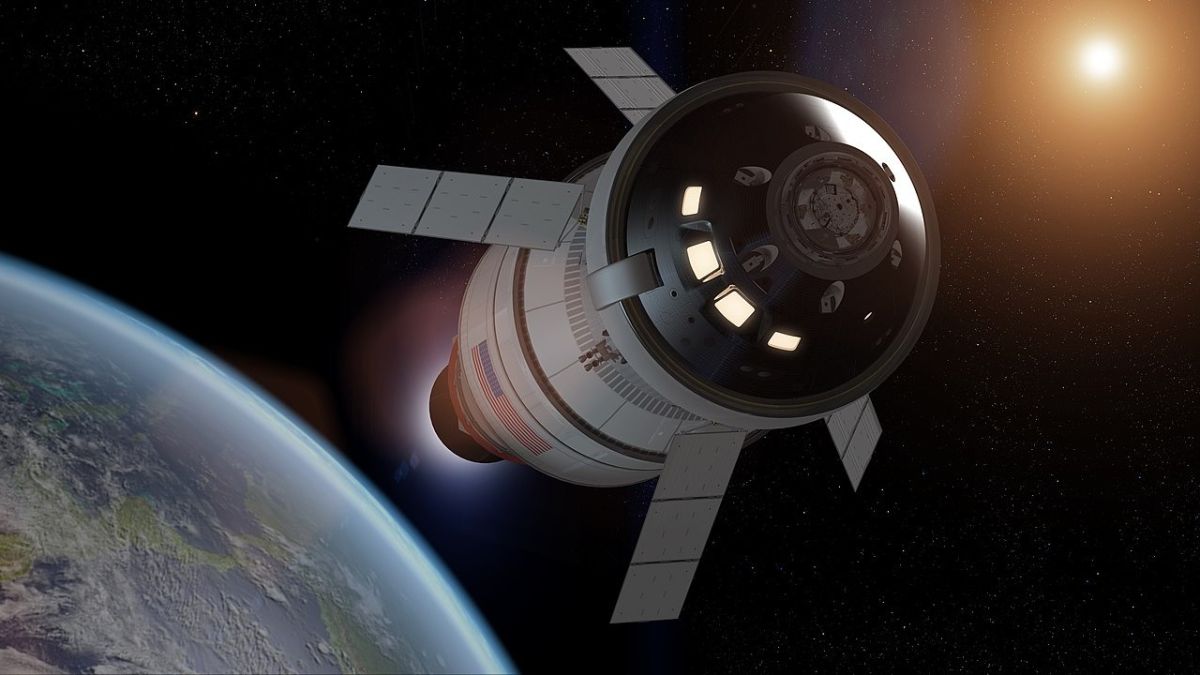Scientific investigations on skin aging and tumor cells, along with tests of technology for oxygen production, batteries, and growing plants, all travel on the 17th Northrop Grumman commercial resupply services mission to the International Space Station.
Read MoreMonth: February 2022
R Aquarii: An Expanse of Light
This object is, in fact, a pair: a white dwarf star that steadily burns at a relatively cool temperature and a highly variable red giant.
Read MoreThese photos of SpaceX’s Monday launch and rocket landing are amazing
SpaceX’s launch of an Italian Earth-observation satellite was worth the wait. SpaceX originally aimed to launch the Cosmo-SkyMed Second Generation FM2 (CSG-2) satellite on Thursday (Jan. 27), but bad weather forced scrubs on three consecutive days. Mother Nature cooperated on Sunday (Jan. 30) but a rogue cruise liner didn’t, straying into the “no-go zone” downrange of Florida’s Cape Canaveral Space Force Station and scuttling that day’s attempt as well. Related: The evolution of SpaceX’s rockets in pictures The Falcon 9 and CSG-2 got off the ground in a dazzling sunset…
Read MoreFisher debuts Artemis, Moonwalker space pens for return to moon
Fisher Space Pen is ready for NASA’s next missions to the moon, 50 years after its writing instruments were used by astronauts on the lunar surface. The Nevada-based, family-run company has introduced its new Artemis Space Pen series, as well as a special edition of its original model space pen that made history on NASA’s Apollo missions. All of the new pens feature Fisher’s patented pressurized ink cartridge that allows them to write in the extreme environments of outer space, as well as upside down, under water and on almost…
Read MoreSee the Sun from Other Stars
We journey to distant suns to look back at our solar system and see its place among the stars. The post See the Sun from Other Stars appeared first on Sky & Telescope.
Read MoreNASA’s Artemis 1 moon mission: Live updates
Refresh 2022-02-02T16:58:58.741Z Artemis 1 status briefing starts soon NASA officials are holding a news conference today (Feb. 2) at 12 p.m. EST (1700 GMT) to discuss the delayed rollout of the SLS rocket. You can listen to the teleconference live in the window above, courtesy of NASA. “While the teams are not working any major issues, NASA has added additional time to complete closeout activities inside the VAB [Vehicle Assembly Building] prior to rolling the rocket out for the first time,” agency officials wrote in a statement. Full story: NASA delays…
Read MoreNASA, Space Station Partners Approve First Axiom Mission Astronauts
NASA and its international partners approved crew members for Axiom Space’s first private astronaut mission to the International Space Station.
Read MoreClimate Scientist Dr. Christian Braneon
Dr. Christian Braneon, a climate scientist at NASA GISS, presents data visualizations and the state of current satellite missions to Vice President Kamala Harris.
Read MoreNASA Invites Media to Uncrewed Artemis Moon Mission Update
NASA will host a media teleconference at noon EST today, Wednesday, Feb. 2, to discuss progress toward the launch of the agency’s uncrewed Artemis I mission.
Read MoreHow many galaxies are there?
Galaxies are vast collections of stars that populate our universe. But how many galaxies are there? Counting them seems like an impossible task. Sheer numbers is one problem — once the count gets into the billions, it takes a while to do the addition. Another problem is the limitation of our instruments. To get the best view, a telescope needs to have a large aperture (the diameter of the main mirror or lens) and be located above the atmosphere to avoid distortion from Earth’s air. Perhaps the most resonant example…
Read More